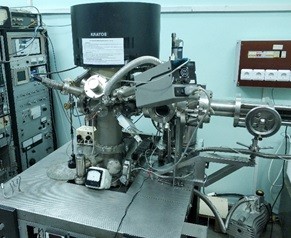
One of the benefits of attending conferences is the opportunity to meet users of Kratos instruments and to learn how our spectrometers are being used for materials characterisation. During the recent ECASIA’19 we met up with Dr. Lidiya Kibis who is working at the Boreskov Institute of Catalysis, part of the Siberian Branch of the Russian Academy of Sciences. Our interest was sparked when Dr. Kibis told us that her institute were generating data from a Kratos ES-300 which was initially installed in Moscow in 1981, and then transferred to Novosibirsk at the end of 1990’s. Could this be the oldest working Kratos spectrometer?
 During our discussion Dr. Kibis explained that ‘there are about 10 groups within the Boreskov Institute of Catalysis that are regularly using the Kratos spectrometer to characterise a wide range of materials. These range from carbon nanomaterials to supported metal/oxide nanoparticles and composite catalysts. An example of her work with the ES-300 can be found in a recent publication analysing ‘low-temperature NO+CO activity of Rh-doped CeO2 catalysts’ published in the Applied Surface Science journal. Not detailed in this publication but important to a number of groups in the institute is the in-house designed sample preparation chamber that allows pre-treatment of samples prior to analysis without exposure to atmosphere.
During our discussion Dr. Kibis explained that ‘there are about 10 groups within the Boreskov Institute of Catalysis that are regularly using the Kratos spectrometer to characterise a wide range of materials. These range from carbon nanomaterials to supported metal/oxide nanoparticles and composite catalysts. An example of her work with the ES-300 can be found in a recent publication analysing ‘low-temperature NO+CO activity of Rh-doped CeO2 catalysts’ published in the Applied Surface Science journal. Not detailed in this publication but important to a number of groups in the institute is the in-house designed sample preparation chamber that allows pre-treatment of samples prior to analysis without exposure to atmosphere.
As mentioned, it’s fascinating to learn what our Users are doing with their spectrometers. Whilst we doubt that there are any working spectrometers older than the ES-300 at Boreskov Institute of Catalysis we’d welcome your stories to help us celebrate Kratos’ 50 years of XPS.
